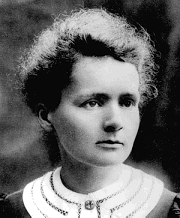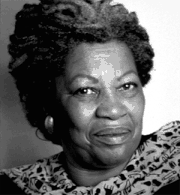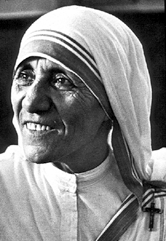Women Nobel Prize Winners
Women Nobel Prize Winners for Literature
| 1909 | Selma Lagerof of Sweden | |
| 1926 | Grazia Deledda of Italy | |
| 1928 | Sigrid Undset of Norway | |
| 1938 | Pearl Buck of the U.S. | |
| 1945 | Gabriela Mistral of Chile | |
| 1966 | Nelly Sachs of Sweden | |
| 1991 | Nadine Gordimer of South Africa | |
| 1993 | Toni Morrison of the U.S.
| |
| 1996 | Wislawa Szymborska of Poland | |
| 2004 | Elfriede Jelinek of Austria | |
| 2007 | Doris Lessing of the United Kingdom |
Women Nobel Peace Prize Winners
| 1905 | Bertha von Suttner (Austria) | |
| 1931 | Jane Addams (U.S.) | |
| 1946 | Emily G. Balch and John R. Mott (U.S.) | |
| 1976 | Mairead Corrigan and Betty Williams (both Northern Ireland) | |
| 1979 | Mother Teresa of Calcutta (India)
| |
| 1982 | Alva Myrdal (Sweden) | |
| 1991 | Daw Aung San Suu Kyi (Burma) | |
| 1992 | Rigoberta Menchú (Guatemala) | |
| 1997 | International Campaign to Ban Landmines and Jody Williams (U.S.) | |
| 2003 | Shirin Ebadi (Iran) | |
| 2004 | Wangari Maathai (Kenya) |
Women Nobel Prize Winners in Science
Linda Buck
(Physiology or Medicine, 2004)
She and fellow American Richard Axel discovered how the olfactory system—the sense of smell—works and how people are able to recognize and remember more than 10,000 odors.
Marie Sklodowska Curie
 AIP Niels Bohr Library |
(Physics, 1903 and Chemistry, 1911)
Marie Curie is considered the most famous of all women scientists. She was the only woman ever to win two Nobel Prizes. By the time she was 16, Marie had already won a gold medal at the Russian lycée in Poland upon the completion of her secondary education. In 1891, almost penniless, she began her education at the Sorbonne in Paris. In 1903 her discovery of radioactivity earned her the Nobel Prize in physics. In 1911 she won it for chemistry.
Irene Curie
(Chemistry, 1935)
Irene Curie was the daughter of Marie Curie. She furthered her mother's work in radioactivity and won the Nobel Prize for discovering that radioactivity could be artificially produced.
Gerty Radnitz Cori
(Physiology or Medicine, 1947)
Gerty Cori was the first American woman to win a Nobel Prize in science. She studied enzymes and hormones, and her work brought researchers closer to understanding diabetes. She won the Nobel Prize for discovering the enzymes that convert glycogen into sugar and back again to glycogen.
Barbara McClintock
(Physiology or Medicine, 1983)
Barbara McClintock studied the chromosomes in corn/maize and her work uncovered antibiotic-resistant bacteria and a possible cure for African sleeping sickness.
Maria Goeppert Mayer
(Physics, 1963)
Maria researched the structure of atomic nuclei. During World War II she worked on isotope separation for the atomic bomb project.
Rita Levi-Montalicini
(Physiology or Medicine, 1986)
Rita is an Italian neuroembryologist known for her co-discovery in 1954 of nerve growth factor, a previously unknown protein that stimulates the growth of nerve cells and plays a role in degenerative diseases like Alzheimer's disease. She received the Nobel Prize in Physiology or Medicine in 1986.
Dorothy Crowfoot Hodgkin
(Chemistry, 1964)
Dorothy discovered the structures of penicillin and vitamin B(12). She won the Nobel Prize for determining the structure of biochemical compounds essential to combating pernicious anemia.
Gertrude Elion
(Physiology or Medicine, 1988)
Gertrude Elion is the only woman inventor inducted into The Inventors Hall of Fame. She invented the leukemia-fighting drug 6-mercaptopurine. Her continued research led to Imuran, a derivative of 6-mercaptopurine that blocks the body's rejection of foreign tissues.
Rosalyn Sussman Yalow
(Physiology or Medicine, 1977)
Rosayln Yalow won the Nobel Prize for developing radioimmunoassay, a test of body tissues that uses radioactive isotopes to measure the concentrations of hormones, viruses, vitamins, enzymes, and drugs.
Christiane Nüsslein-Volhard
(Physiology or Medicine, 1995)
Christiane Nüsslein-Volhard won the Nobel Prize using the fruit fly to help explain birth defects in humans.
Read more...














